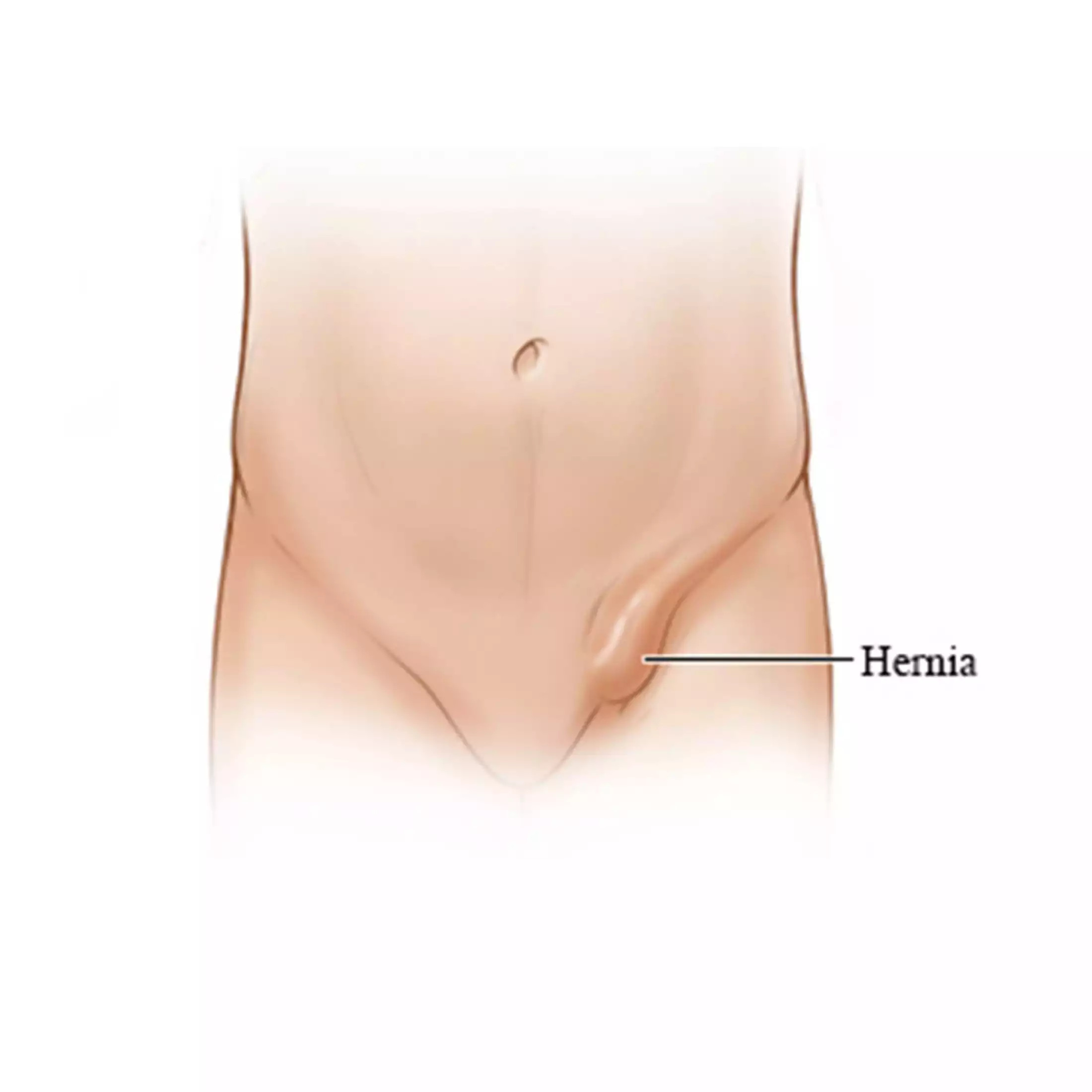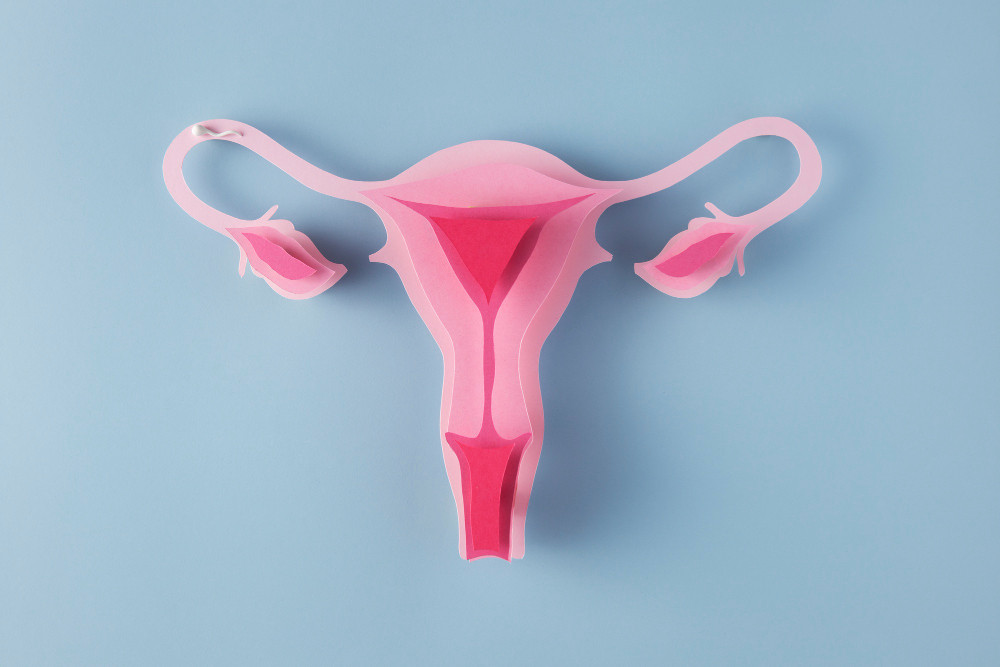Definition
An inguinal hernia is a medical disorder characterized by the displacement of an organ from its normal position into the inguinal canal, located in the groin area. Hernias arise due to elevated intra-abdominal pressure, leading to the weakening of the abdominal muscles and the resulting development of an opening. The internal organs in the abdomen could shift to the inguinal canal area through this gap.
Inguinal hernia is a prevalent form of hernia. During the occurrence of an inguinal hernia, the bulge may exhibit an intermittent or persistent presence. The protrusion frequently manifests when the individual exerts effort by lifting large objects, coughing, or straining. Typically, the lump will vanish while in a reclining position. If intra-abdominal pressure remains elevated or if the size of the abdominal opening is sufficiently great, the organ may encounter problems and undergo a displacement to a different, more remote site, such as the scrotum. This can elicit a perception of pain and fever in the individual experiencing it. Thus far, surgical treatments have been the sole choice for treating inguinal hernias. Surgical intervention is used to realign the location of the intestine and close the preexisting gap.
Causes
Inguinal hernias can be classified into two forms, indirect inguinal hernias and direct inguinal hernias, based on the underlying condition.
- Indirect inguinal hernia
This is a congenital inguinal hernia resulting from developmental abnormalities in the abdominal wall. This phenomenon arises when the aperture in the inguinal canal does not successfully seal shut. Indeed, this muscle should spontaneously contract within a few weeks of pregnancy or shortly after childbirth. This is the mechanism responsible for the displacement of the intestines into the lower abdomen. While inguinal hernias are typically present from birth, they may not always be detected within the first year of life. There are instances where certain cases only manifest in adulthood. This syndrome manifests in approximately 1% to 5% of healthy newborns and 10% of infants born prematurely.
- Direct inguinal hernia
The abdominal wall muscles weaken as a result of repeated pressure, such as when lifting heavy objects frequently, which leads to this condition, which is a hernia. This condition affects adult males predominantly.
Risk Factors
There are multiple factors that can elevate the risk of inguinal hernia formation due to abdominal wall destruction:
- Abdominal injury
- Abdominal surgery
- Persistent cough. Smoking can cause a persistent cough.
- Pushing out during urination or defecation
- Exercises that press on the abdominal wall. Like standing for an extended period or lifting heavy weights.
- Pregnancy increases stomach pressure and weakens abdominal muscles.
- Overweight increases gastric pressure.
- A family history of hernias
- The premature birth of babies
- Diseases include cystic fibrosis, which affects the respiratory and digestive systems
- Inguinal hernias, while possible in any individual, are more prevalent in males.
Symptoms
Inguinal hernias are frequently undetected. Typical symptoms experienced by those with this condition include:
- There is a noticeable bulge or swelling in the groin area. Under certain conditions, the protrusion may extend to the testicles (scrotum). The protrusion may be intermittent or persistent. In the event that the protrusion continues, symptoms typically manifest as discomfort or pain in the protrusion.
- Sensation of weightiness on the protrusion.
- Groin pain and inflammation
- Pain experienced during coughing, exertion, or flexion
- Acute onset of nausea and vomiting
In addition to adults, children and newborns may experience inguinal hernias. Crying, coughing, defecating, and straining usually make the protrusion obvious and larger.
In adults and children, hernias can progress and, if left untreated, increase the risk of complications. Complaints regarding complicated conditions may consist of the following:
- The intensity of the pain in the hernia is increasing.
- Increasing symptoms of nausea and vomiting
- Acute abdominal pain
- Change in hernia lump color to red, purple, or dark
- Difficulty in defecating and flatulence.
- Fever
This condition is harmful and necessitates immediate medical intervention to prevent complications and injury to the constricted organ or intestine.
Diagnosis
In order to identify an inguinal hernia, the doctor will perform a comprehensive investigation and assessment, known as an anamnesis, which involves asking a series of questions and obtaining answers related to:
- Patient symptoms
- Activity history
- Surgical history
- Abdominal injury history
Next, the doctor will perform a thorough physical examination, such as:
- Vital signs are checked. The doctor will measure the patient's vital signs, such as body temperature, blood pressure and pulse
- Examination of the abdominal area
- Inspection of the protrusion area. Generally, the doctor will see and touch the hernia in various positions, such as standing and sitting. To make the examination clearer, the doctor will also instruct the patient to cough or push so that the hernia is visible or can be felt more clearly.
In the event that the physical examination results are considered inadequate, the doctor will request that the patient undergo additional examinations, including:
- Imaging. Utilizing ultrasound, CT scan, and MRI imaging techniques to visualize the contents of the protrusion
- Urinalysis. This examination is conducted to exclude alternative etiologies of scrotal pain other than hernia.
Management
A surgical procedure refers to the treatment of inguinal hernias. In order to reinforce the weakened abdominal wall and reinsert protruding organs or intestines, this procedure is executed. Inguinal hernia surgery is performed to relieve symptoms, prevent complications, and inhibit the development or recurrence of hernias.
Two surgical techniques are available for the treatment of inguinal hernias:
- Performing an open surgical procedure (laparotomy). In order to reposition the intestines and confined organs, the surgeon will perform a groin incision. Then, continue with the procedure for fortifying the compromised stomach tissue and closing the aperture.
- Laparoscopy is a minimally invasive surgical procedure that involves using a small camera to examine the inside of the abdomen. The surgeon will make multiple minimal abdominal incisions. Using one of these incisions, the surgeon will insert a thin tube fitted with a camera and a miniature light at the tip. Using the camera, the doctor may visually assess the condition of the patient's abdomen. Using this camera, the doctor will utilize specialized surgical instruments to reposition the hernia.
Complications
The possible complications arising from untreated inguinal hernias include the following:
- Scrotal hernia. This occurs because the internal organs migrate to a more remote location, specifically the testicles (scrotum). The hernia has the capacity to inflict harm on the testicles as a result of pressure exertion.
- Incarcerated hernia. This refers to a situation in which the intestines and tissue inside the hernia sac become ensnared or caught.
- Strangulated hernia. This is a condition characterized by the constriction of blood vessels. This can jeopardize the viability of organs since they are deprived of essential nutrients due to the lack of blood vessel nourishment. In addition, the compression of organs can lead to infections and mechanical gastrointestinal issues, resulting in the inability to have bowel movements.
Prevention
Hernias resulting from congenital birth disorders in the abdominal wall are inherently challenging to prevent. However, there are numerous measures that can be taken to mitigate the risk of abdominal wall weakening, a condition frequently observed in adulthood. These measures include:
- Do not lift heavy weights.
- Keep a healthy weight
- Eat fiber-rich foods to avoid constipation and straining during defecation.
- Don't smoke to prevent coughing.
When to See a Doctor?
If a groin protrusion cannot be reinserted and continues, see a doctor promptly. If the hernia turns red, purple, or dark and you have hernia pain, abdominal pain, nausea, vomiting, and fever, go to the emergency room.
Looking for more information about other diseases? Click here!
- dr Ayu Munawaroh, MKK
NHS Choices UK (2018). Health A-Z. Inguinal hernia repair.
Harvard Medical School (2019). Diseases & Conditions. Inguinal Hernia.
Mayo Clinic (2019). Inguinal hernia.
WebMD (2019). What Is an Inguinal Hernia?
My Cleveland Clinic (2018). Inguinal Hernia.










